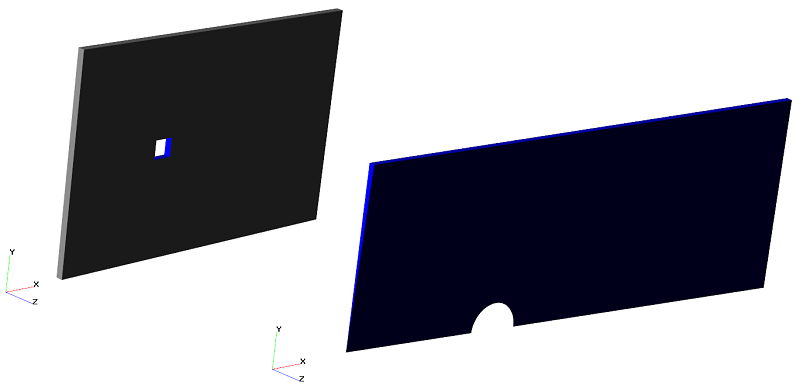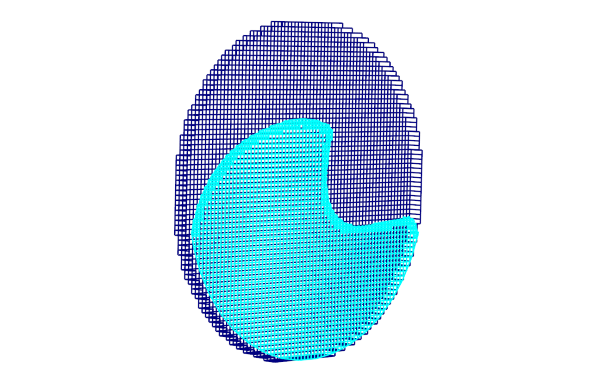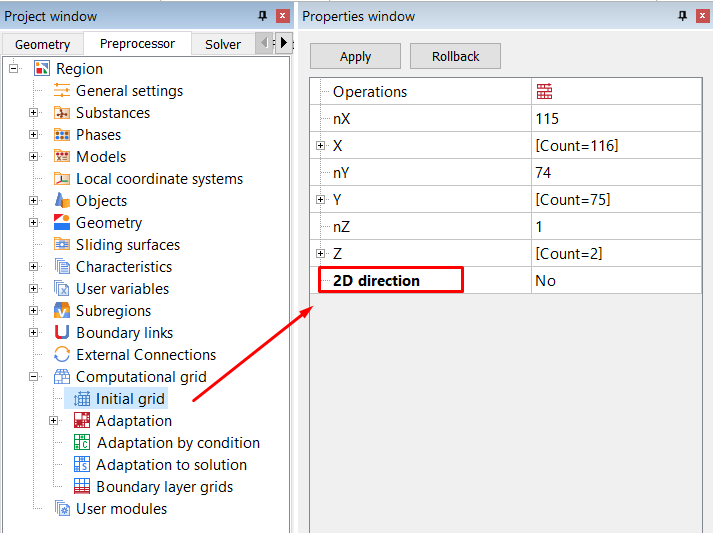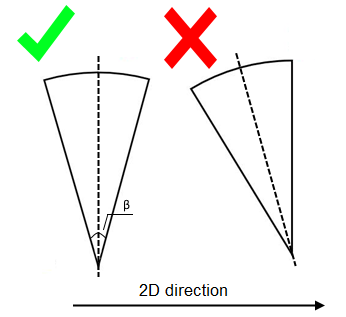A NEW WAY TO DEFINE TWO-DIMENSIONALITY - " 2D DIRECTION"
Starting from version 3.12.02 two-dimensionality can be set by enabling the "2D direction" option, located in the properties window of the Initial grid tree element.
If "2D direction" is disabled (2D direction = No), the project is considered as a 3D problem. In this case, the number of cells in each direction is set manually in their respective fields. If, additionally, you apply grid adaptation, each cell is divided into two parts in each coordinate direction, for every level of adaptation. So if you have set for there to be only one cell in some dimension, you have indeed created a 2D statement. However, after the adaptation is applied the two- dimensionality will be lost, and the overall number of cells will significantly increase. But we would like to avoid this, therefore…
When you specify a 2D direction (X, Y, or Z)*, this automatcally sets a thickness of one cell in that dimension. And this will remain the case throughout the calculation regardless of any grid adaptations. It should be noted, that when using the "2D direction" option, you do not need to change the criterion for small cells from absolute to relative, as was required in previous versions.
* - you can set only one 2D direction
SPECIFICS WHEN SETTING TWO-DIMENSIONALITY IN A PROJECT
Let's consider the specifics of setting two-dimensionality for two types of geometry: flat and sector.
 Examples of flat (flow around a cube) and sector (flow around a sphere) arrangements with two-dimensionality in the Z direction
Examples of flat (flow around a cube) and sector (flow around a sphere) arrangements with two-dimensionality in the Z direction
Flat 2D arrangement
- BC types on faces perpendicular to the 2D direction: symmetry, the wall or the connected.
- The model size along the 2D direction: there are no restrictions. The cell thickness across the geometric model can be any size relative to the cell dimensions in other directions: both, narrow and, conversely, very elongated.
- The model position in a space: the normal to each facet of the geometry must be either parallel or perpendicular to the specified 2D direction. This means that the narrowest face (the one ususally set to be one cell thick) must be strictly parallel to the specified 2d direction.
By using the "2D direction" option, the criterion for small cells remains absolute by default
The relative criterion should be used only for solving icing problems ("Ice" phase limiters > Small cells = Relative). Since the ice phase is formed gradually and with the help of small cells, in order to prevent them from merging into one, it is necessary to use the relative criterion for small cells, in all other cases - it should be absolute.
sector 2D arrangement
The two-dimensional sector statement is modeled only with enabling the "2D direction" option.
- BC types on faces perpendicular to the 2D direction: symmetry, or connected.
- The model size along the 2D direction: there is a limit on the value for the sector angle (β): β ⩽ 10 deg.
- The model position in a space: the sector symmetry axis must be strictly perpendicular to the 2D direction, as shown in the image below.
By modeling a 2D sector arrangement, specify the "2D direction" and the absolute criterion for the small cells




